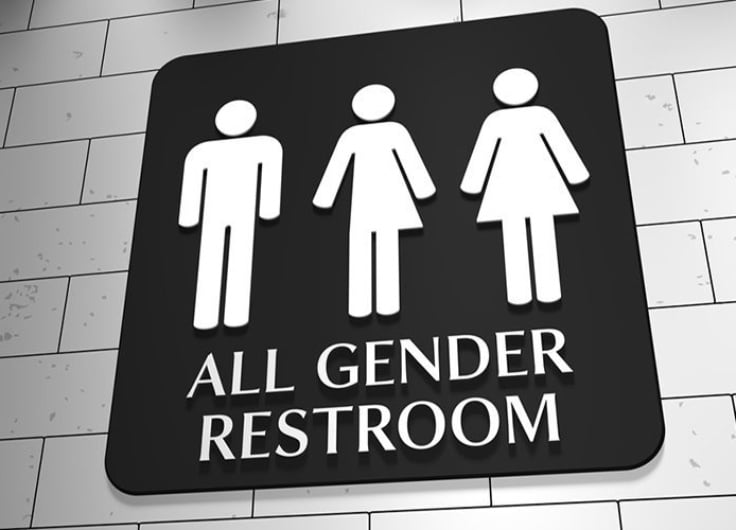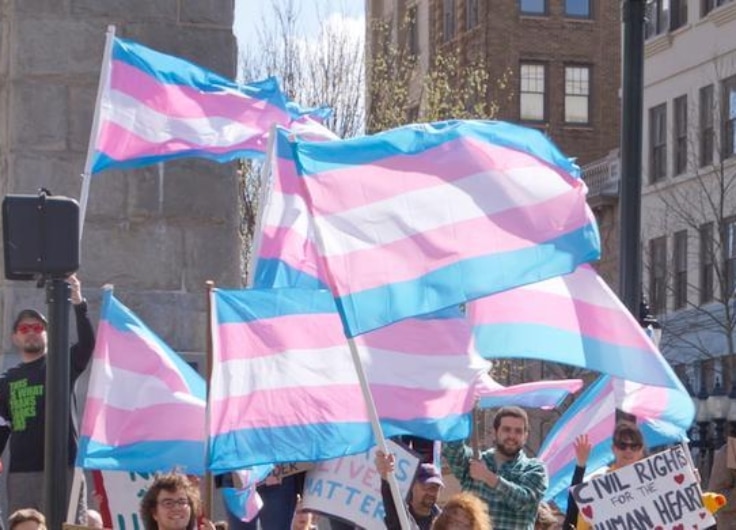Why the Final Word on Gender and Language Is Not Yet Said
In August 2022, the Taalunie (Dutch Language Union) published a set of language recommendations
on gender-sensitive language. In doing so, they were responding to an influx of questions to language advisory services: questions about pronouns, but also about issues that have been around for much longer, such as female jobs titles and roles and “neutral” greetings in emails and letters. What we now call gender-inclusive language is not a new phenomenon, but an additional layer has recently been added. Where do we stand today in 2023?
The first question that immediately comes to mind: is it sex or gender? Until a few years ago, toilets, parenting, clothes and toys could be unisex as well as gender-neutral. These terms were often used interchangeably. In previous language recommendations, the Taalunie considered job titles such as doctor, engineer and minister unisex as well. But in 2016, Ton den Boon, the editor-in-chief of the Van Dale dictionary, wrote in the Dutch newspaper Trouw that the term gender-neutral
was emerging. After all, sex and gender are two different things: sex refers to biological references, gender refers to your identity. The latter can be male or female, but also fluid or non-binary. Since then, the term gender-neutral
has become increasingly popular, at the expense of unisex. However, this term has been replaced already in the newest language recommendations of the Taalunie. Not with gender-neutral, but with gender-aware. The Taalunie has a good reason for this.
Karen Deschamps, a member of the working group commissioned by the Taalunie, explains: “The language and gender specialists in our working group not only pointed out the difference between gender and sex, they also realized that language is just rarely neutral in practice. Therefore, we also felt that the term gender-neutral was inappropriate.”
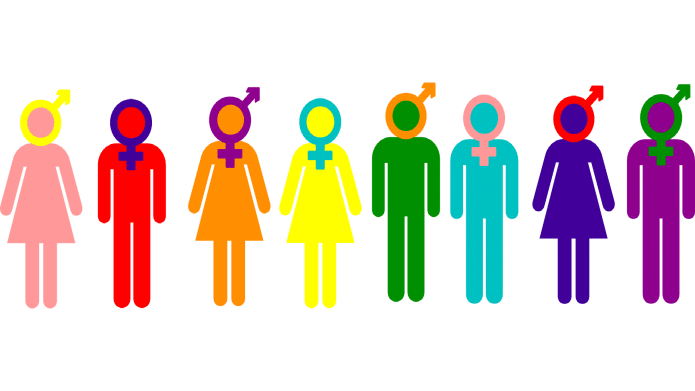
Free, diverse or inclusive?
Gender-neutral is most frequently used in media, followed by gender-inclusive and gender-diverse. Sometimes we also read about gender-free, gender-equal, and gender-sensitive.
All the same, or not quite? Linguist Vivien Waszink takes a closer look at the three most important terms in her book Dat mag je óók (al niet meer) zeggen
(2022).
Gender-neutral means that there is no distinction made in language between men and women. For example, you can’t tell from a word like doctor whether it is about a man or a woman, and the pronoun that can refer to all possible genders. But not everyone supports this. According to Nadia Hanssens, advisor Diversity & Inclusion at the Flemish Public Broadcasting Company (VRT), language is never truly gender-neutral. That’s why she, depending on the context, prefers to choose gender-sensitive
or gender-inclusive.
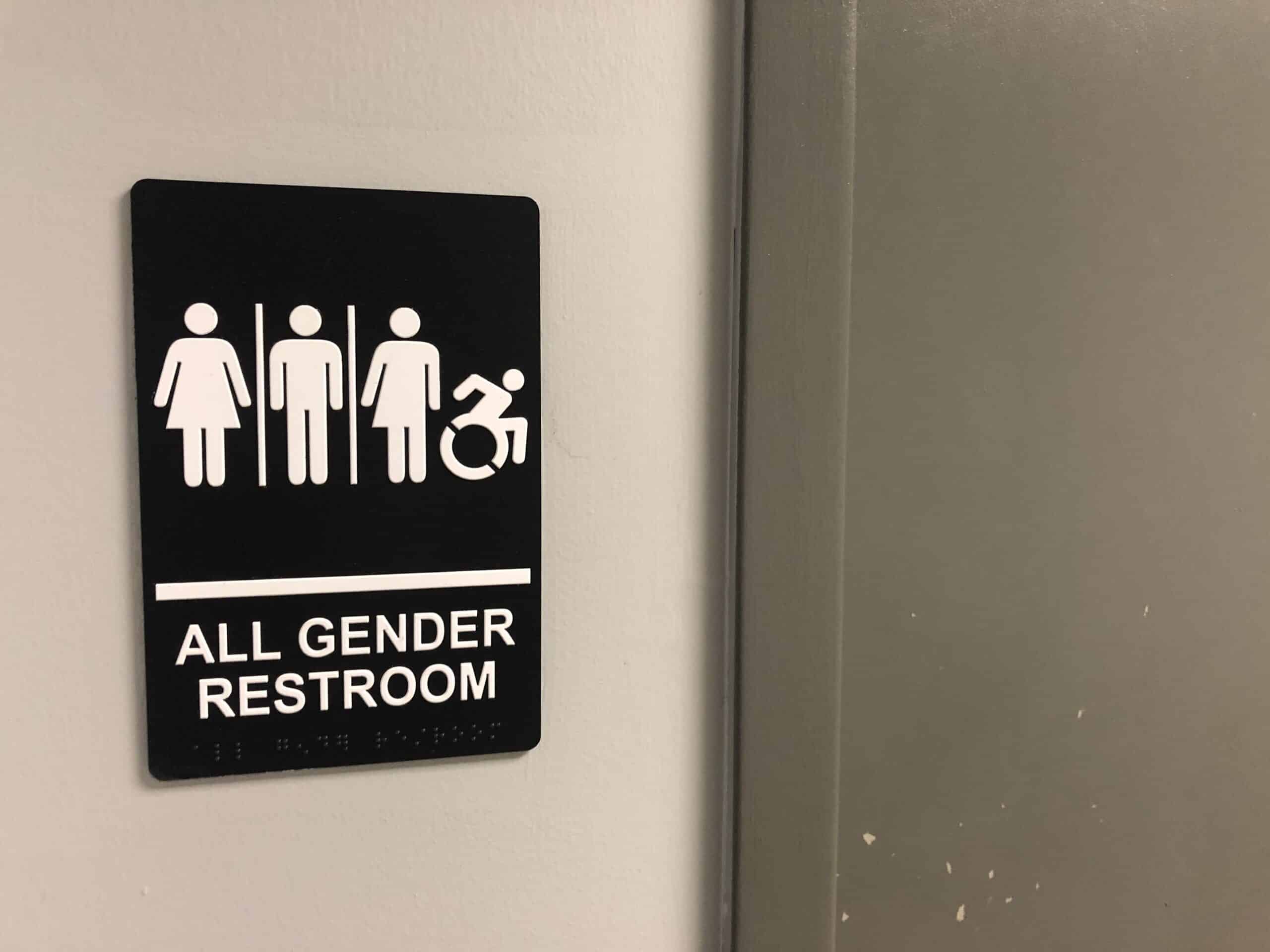
Gender-inclusive indicates that all genders should feel seen, heard and recognized in communication. Thus, genders are not invisible, but we can all be included. The nearly synonymous gender-diverse, most often to describe groups of people, emphasizes that all genders are welcome, no matter how diverse.
Gender-sensitive is the term used by taaladvies.net. According to their website, it means “making deliberate choices to ensure that all genders, individually or as a group, can identify with and feel respected in wording.” Thus, gender-inclusive language is the result of gender-aware
language choices.
The female profession
The search for gender-neutral/gender-inclusive language began as early as the 1970s. In 1981, the magazine Onze Taal (Our Language) published an article about whether gender-neutral job and professional titles are a good idea and whether they even exist. Since then, questions about this topic have been a regular occurrence for every language consultant. There are more or less two points of view. They start from the same feminist premise, but lead to opposite conclusions.
First position: when there is a female variant of a job or professional title, we also use it when talking about women. In this way, we show that women can also take up this profession. In addition, young girls come to understand that these professions are also suitable for them. So we say actress, firewoman and stewardess.
Second position: we choose neutral job titles and avoid the ones that clearly have a masculine or feminine ending. To practice a profession, your gender usually does not matter and therefore does not need to be named. So we say doctor, author and nurse.
The quest for gender-neutral/gender-inclusive language began as early as the 1970s
None of these tactics is flawless. Gender-neutral variations are not always available, for example with fireman/firewoman. Furthermore, some terms that are considered neutral evoke rather male or female associations in reality. Hardly anyone spontaneously thinks of a woman when talking about an engineer and of a man when talking about a beautician. And then there are cases such as secretary/secretary (Dutch: secretaris/secretaresse), which refer to different professions, and leader/leader (Dutch: leider/leidster), where the former brings to mind a world leader and the latter brings to mind a kindergarten teacher.
How do you deal with such words? The Volkskrant, according to its own style guide, “strives for gender equality in the use of language” and therefore chooses “the possible neutral variant when describing someone’s profession or function.” In her column in Trouw, authoress Rosita Steenbeek explains why she disagrees:
“It used to only be men who performed these professions. Why shouldn’t it be reflected in the language that women participated in many ways? The feminine form would sound less serious. (…) In this way, the masculine becomes the norm and the feminine is banned from language. This is also done by calling woman a doctorandus. I am not a Dutchman, but a Dutchwoman, and an authoress. If that makes people more skeptical of my competence, that’s unfortunate, but I don’t allow myself to be called Mr. Steenbeek either.”
A stalemate, in other words. That’s why the language advisors of Onze Taal and the Flemish government (Team Taaldvies) have opted to put the choice in the hands of the person being discussed: does he or she want to emphasize their own – usually feminine – gender, or not at all? If that’s not possible, the writer/author/authoress must judge for him or herself what suits them most.
The Taalunie has now compiled all possible strategies in a new advice together with the pros and cons and what effects the various choices have according to research. In addition, existing advice has been updated: for example, under expert/expert we now read that expert is used to indicate “male, female and non-binary experts” – previously it was “male and female experts” – and it is explained that expert is “grammatically masculine, which can lead to ‘a one-sided male interpretation’”.
The author and her books?
Choosing the feminine or non-feminine form of a job or professional title is already difficult, but that’s not the only challenge. Because if we refer to a professional, we need a pronoun. How can we do this in a gender-neutral way? For a very long time, he
was considered to be gender-neutral, even by language consulting services. However, in practice, this is obviously not true: when the pronoun he is used, most people automatically think of a man.
No matter how gender-neutral you would like it to be, when you read “every author signs his books”, it doesn’t immediately come to mind that the author could also be a female. This is another reason why some people advocate the female form. They deliberately opt for using author/authoress or even use she and her as a gender-neutral form: “During the event, each author will sign her books”. Proponents hope that as a result, references with her also become more normal in supposedly neutral but often perceived as masculine forms.
Why not choose to use it? Surely that is neuter, and therefore neutral? Because in practice, it feels very strange to refer to people with it. It feels awkward already in “the girl went home, it was tired.” Here the same problem arises as with unisex and gender-neutral: people are simply not neutral beings, not even now during these non-binary times. It gets particularly tricky when you need the possessive pronoun, because then there are only two options left: his and her. No matter how you look at it: we can’t use our pronouns in a unisex or gender-neutral way in Dutch, not even when referring to job titles and professional names that are considered neutral.
Them and that
The quest for more unisex, or gender-neutral communication has been around for a long time. In recent years however, a dimension has been added: the need for a pronoun for those who don’t recognize themselves in the traditional male-female divide. This discussion revolves around who is the norm, and therefore neutral, in a binary male-female world. But this ignores the fact that gender identity is a spectrum, and that there are people who don’t, or don’t always, recognize themselves in the simple dichotomy between he and she.
The lgbtq+ community has long been looking for ways to express those identities and be acknowledged as them, for example, through a new, neutral pronoun. The city Sweden loves to be mentioned as proof that it can be done. After years of public debate, the gender-neutral pronoun hen (in addition to the masculine han and feminine hon) was even given legal status there in 2015. While its use is growing rapidly, it’s certainly not used everywhere yet.
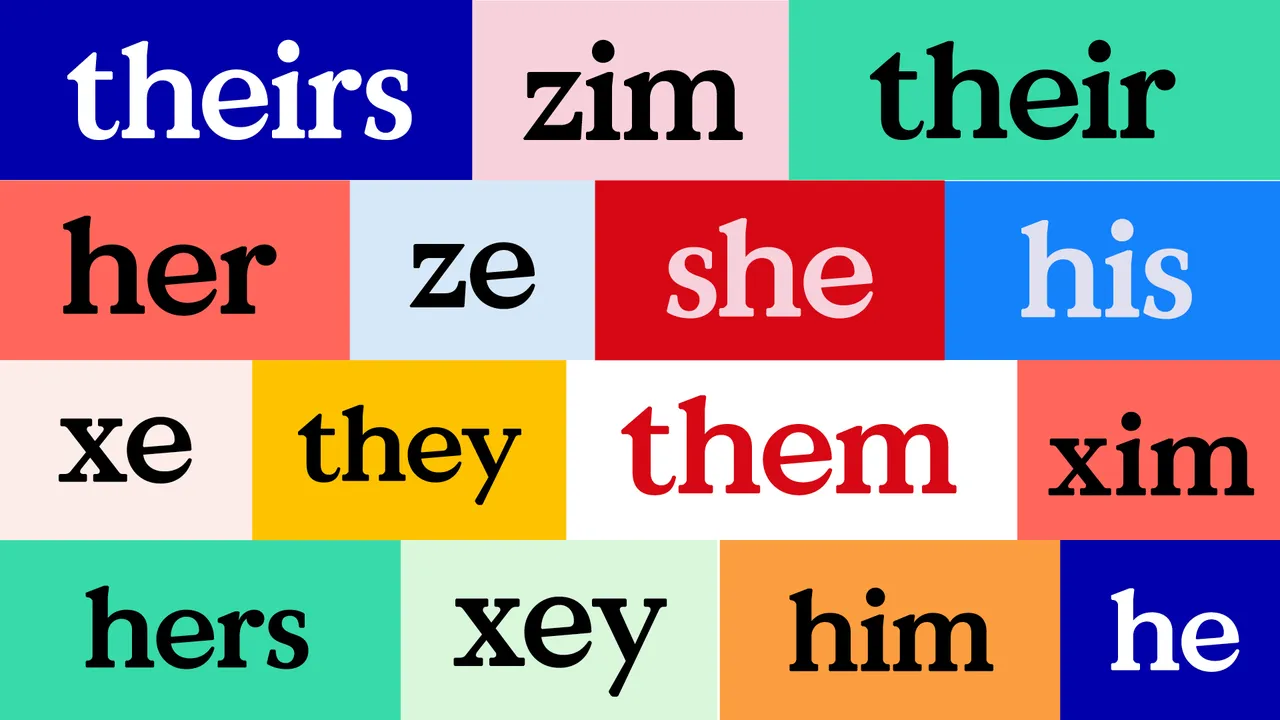
In Dutch language, this wasn’t a point of discussion then. In 2015, people in the Netherlands could submit questions for the Dutch Research Agenda (NWA). One question asked was “how the Dutch language could incorporate contemporary gender realities”. The questions didn’t lead to any new research, but linguist Marc van Oostendorp commented on it in the online journal Neerlandistiek. He argued that this was more of a social than a linguistic issue, and explained why attempts to make alterations in language would have little chance of success.
A year later, The Correspondent took up the courage to bell the cat. The news outlet published an article about the election of they/them as Non-Binary Pronoun by the members of the Transgender Network Netherlands, with that
as a valid alternative. The article regards the pronoun as a solution not only for those who consider themselves as non-binary, but also for the aforementioned non-gender-neutral issues around job and professional titles. After all, if everyone is called they or them, those difficulties will be resolved right away, according to journalist Lisa Peters. Since then, the polemic around the gender-neutral pronoun has become increasingly present in public discourse.
In Flanders, De Morgen wrote in 2018 that gender-neutral or gender-inclusive language seemed to be a topic of discussion anywhere in the world except in Belgium. This was in response to the Dutch Railways’ decision to replace ladies and gentlemen
with dear travellers.
Mentioning your pronouns on your social media profiles and in e-mail signatures is quite normal
It was just the calm before the storm: in 2019, climate activist Anuna De Wever outed herself as non-binary; she uses the pronouns she/he/they on her Instagram. The Dutch Marieke Lucas Rijneveld used to call herself an “in-between person,” using she/they as pronouns, until he announced in 2022 that his pronouns would be he/him from now on. In 2020, non-binary actor Thorn Roos de Vries played the first non-binary character in a Dutch series, and in 2022, Flemish actor Jean Janssens declared that he is non-binary and will no longer be called Naomi. Mentioning your pronouns on your social media profiles, in e-mail signatures and in online meetings is quite normal. Pronouns are clearly no longer a marginal phenomenon.
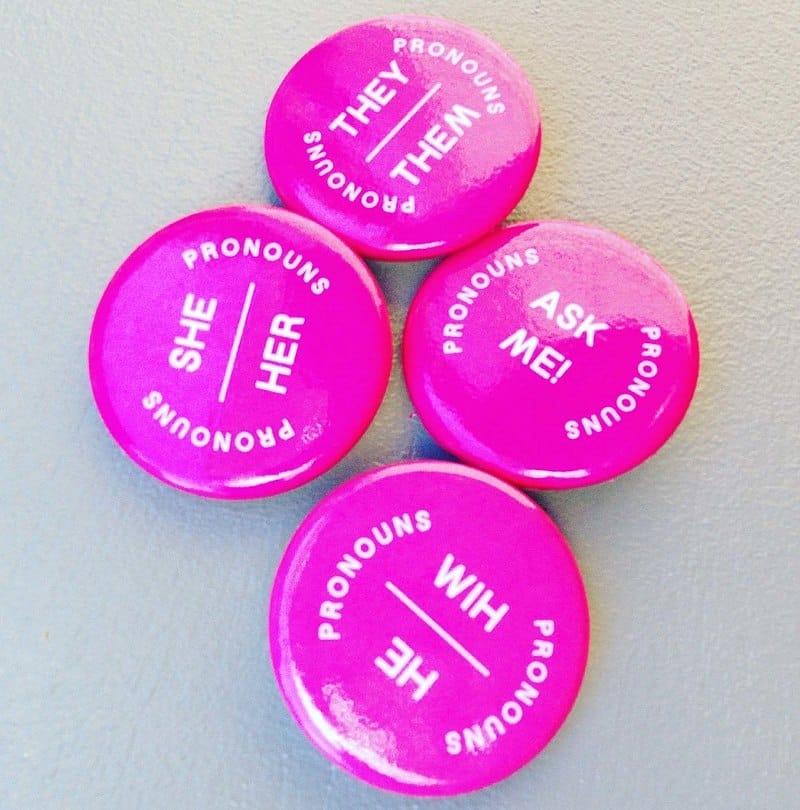
How do we proceed?
Gender-neutral or gender-inclusive language continues to stir controversy. How do we use it properly? Can we still begin a salutation with dear sir or dear madam? How do we deal with these new pronouns? Back in 2019, Anna Geurts described in the low countries why it is not so easy to introduce they/them
and to a lesser extent that as singular gender-neutral pronouns. It’s not our unwillingness to use these terms; they are just incompatible with Dutch grammar.
In the last few years, an increasing number of style guides and writing tips on how to use gender-sensitive language are being published. For example, in 2021 the University of Antwerp published a series of recommendations online and the Belgian federal government did the same in 2022. Since the 2022 edition, the Dikke Van Dale dictionary includes over 150,000 function words that have an x next to the m/f that were already present. Therefore, the Taalunie commissioned a working group in early 2020 to review all existing advices through a more inclusive lens and create a general framework on how to use gender-sensitive language.
Committee member Karen Deschamps: “It was a difficult task. Because of corona we could only have online discussions. We’re not quite ready – we’re still working on the advice on the salutation in letters and e-mails – but after almost two years, it was about time to at least publish the general advice text and the first set. We’re deliberately not imposing anything, nor could we. We’re primarily providing strategies for those who want to embrace gender-sensitive writing.”
Meanwhile, the practical guidelines have arrived. How practical they really are, remains to be seen. According to Flemish weekly Knack, critics call “the advice almost incomprehensible and a measure of nothing because binding rules are lacking.” In NRC, writer Sarah Meuleman wrote the op-ed ‘Break the language impasse’, in which she noted that the Taalunie is not “persistent” enough because it does not present or impose rules. In a response on neerlandistiek.nl, linguist Marc van Oostendorp explained that they can’t, because grammar rules are simply not prescribed rules. The debate about how gender-inclusive our language can be has clearly only just begun.


